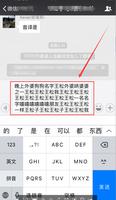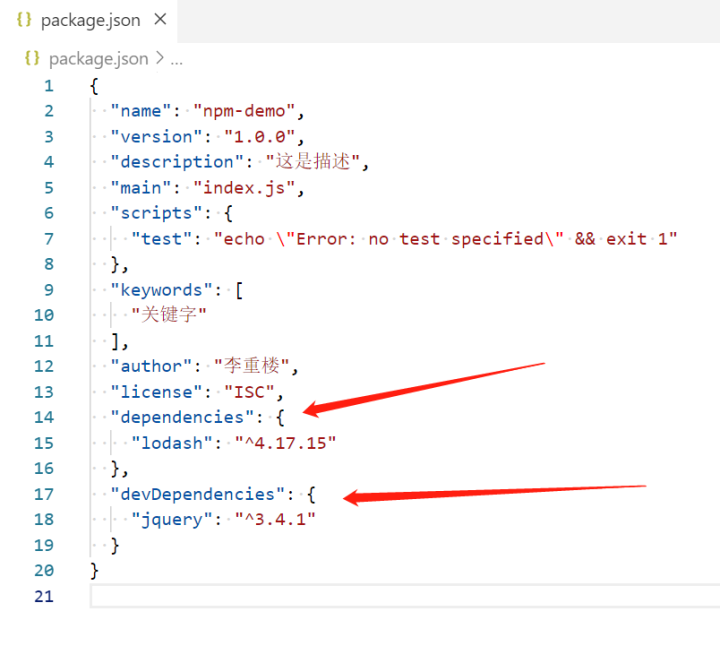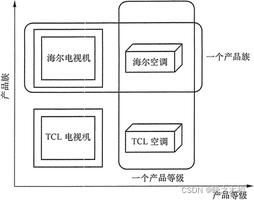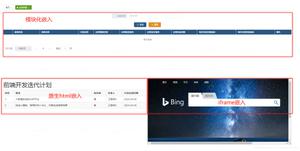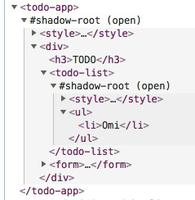物联网架构成长之路(36)-Vue前端入门

1. 前言
物联网平台,需要有一个类似大屏看板的功能。
找了一圈,发现阿里已经有对应的DataV产品,但是那个价格有点贵啊。所以找了这个【http://datav.jiaminghi.com/demo/】,这看起来也是挺不错的。就是需要了解一些前端Vue。说到前端,我之前好久就想入门了。断断续续看视频,写Demo,写小程序。但都处于入门阶段。而且前端变化太快了。半年没看,就各种更新了。不过还是迟早要学的。
2. 安装环境
安装IDE,这里推荐VSCode,然后安装Vetur 插件
Google Chrome 浏览器 安装 Vue.js Devtools 一个Vue的调试工具
安装 npm
请到这里下载 https://nodejs.org/en/download/
1 #现在npm 仓库的网络已经很不错了,如果还不行,那可以使用cnpm2 # 安装淘宝镜像
3 npm install -g cnpm --registry=https://registry.npm.taobao.org
4 #安装 vue-cli 全局安装vue-cli脚手架
5 npm install -g vue-cli
6 #查看是否安装成功
7 vue -V
8 #安装 @vue/cli-init
9 npm install -g @vue/cli-init
10 #使用vue-cli 创建项目
11 vue init webpack projectName
测试项目是否正常
1 cd datav2 npm run dev
3.修改部分参数
1)修改datav/src/router/index.js 在第8行增加mode:\'history\'
1 import Vue from \'vue\'2 import Router from \'vue-router\'
3 import HelloWorld from \'@/components/HelloWorld\'
4
5 Vue.use(Router)
6
7 export default new Router({
8 mode: \'history\',
9 routes: [
10 {
11 path: \'/\',
12 name: \'HelloWorld\',
13 component: HelloWorld
14 }
15 ]
16 })
2)修改datav/config/index.js 第16行,host:\'0.0.0.0\'
4. 安装部分组件
1 npm install axios2 npm install vue-axios
3 npm install @jiaminghi/data-view
4 npm install --save-dev mockjs
5 #安装依赖过程中,如果出现奇奇怪怪的问题,可以删除 node_modules 然后重新 npm install
6 npm run dev
最后在datav/package.json 文件里面的依赖为
1 "dependencies": {2 "@jiaminghi/data-view": "^2.4.5",
3 "axios": "^0.19.0",
4 "vue": "^2.5.2",
5 "vue-axios": "^2.1.5",
6 "vue-router": "^3.0.1"
7 },
配置axios,在datav/src/main.js 文件配置axios
1 // The Vue build version to load with the `import` command2 // (runtime-only or standalone) has been set in webpack.base.conf with an alias.
3 import Vue from \'vue\'
4 import App from \'./App\'
5 import router from \'./router\'
6 import axios from \'axios\'
7 import VueAxios from \'vue-axios\'
8 import dataV from \'@jiaminghi/data-view\'
9
10 require(\'./mock/mock.js\')
11 require(\'./http/http.js\')
12
13 Vue.use(VueAxios, axios)
14 Vue.use(dataV)
15 Vue.config.productionTip = false
16
17 /* eslint-disable no-new */
18 new Vue({
19 el: \'#app\',
20 router,
21 components: { App },
22 template: \'<App/>\'
23 })
配置mockjs
创建两个文件分别是 datav/src/http/http.js datav/src/mock/mock.js
http.js
1 import axios from \'axios\'2
3 axios.defaults.headers.get[\'Conetnt-Type\'] = \'application/json\'
4
5 //请求拦截
6 axios.interceptors.request.use(
7 config =>{
8 const token = localStorage.getItem(\'userToken\');
9 //Authorization: Bearer AccessToken OAuth2.0认证时,需要从浏览器存储中获取AccessToken
10 config.headers.Authorization = "Bearer " + "token";
11 return config;
12 },
13 error =>{
14 return Promise.reject(error);
15 }
16 )
17
18 //响应拦截器
19 axios.interceptors.response.use(
20 response =>{
21 return response;
22 },
23 error =>{
24 return Promise.reject(error);
25 }
26 )
27
28 export default axios
mock.js
1 import Mock from \'mockjs\'2
3 Mock.setup({
4 timeout: \'200 - 400\'
5 })
6
7 function loginFun(param){
8 console.log(param);
9 return {
10 "value": 11
11 }
12 }
13
14 Mock.mock(\'/login\', \'post\', loginFun); //虚拟数据
除了通过mock模拟数据外,还可以通过proxy代理方式。
两种方式的区别是,当前后端分离时,前后端定好协议后,双方同时进行开发,前端可以使用mockjs模拟数据,来继续前期开发。
当后端开发完成后,会部署到服务器,此时,前端还需要进行集成和数据调试,这个时候,就需要前端开放时,能请求到服务器的API,但是由于浏览器的跨域请求限制,所以需要配置代理。实现本地开发。
proxyTable方式,在 datav/config/index.js 的 module.exports 里面配置proxyTable
1 /**2 * 代理服务器
3 */
4 proxyTable:{
5 \'/api\':{
6 target: \'https://api.wunaozai.com\', //目标接口域名
7 changeOrigin: true, //是否跨域
8 pathRewrite:{
9 \'^/api\': \'/\' //重写接口
10 }
11 }
12 },
没有后端的同学,可以用这个测试一下:https://api.ly522.com/yiyan
5. 开始写代码
修改后HelloWorld.vue 代码如下
1 <template>2 <div class="hello">
3 <h1>{{ msg }}</h1>
4 <h1>{{ mockMsg }}</h1>
5 <h1>{{ proxyMsg }}</h1>
6 </div>
7 </template>
8
9 <script>
10 export default {
11 name: \'HelloWorld\',
12 data () {
13 return {
14 msg: \'Welcome to Your Vue.js App\',
15 mockMsg: \'mockMsg\',
16 proxyMsg: \'proxyMsg\'
17 }
18 },
19 mounted() {
20 var that = this;
21 //通过mockjs获取数据
22 this.axios.post(\'/login\').then((res)=>{
23 console.log(res.data)
24 that.mockMsg = res.data.value;
25 }).catch((err)=>{
26 console.log(err)
27 })
28 //通过proxyTable获取数据
29 this.axios.get(\'/api/yan.php?format=json\').then((res)=>{
30 console.log(res.data)
31 that.proxyMsg = res.data.text;
32 }).catch((err)=>{
33 console.log(err)
34 })
35 },
36 methods:{
37
38 }
39 }
40 </script>
41
42 <!-- Add "scoped" attribute to limit CSS to this component only -->
43 <style scoped>
44
45 </style>
6. 编译,部署
npm run build
编译后,在 datav 目录下有个dist文件夹,把这个文件夹下的所有文件,部署到服务器,就完成前端开发。
部署时,可以通过Nginx代理后端和前端,也可以把dist文件夹复制到后端工程里面。
7. 运行效果
2020-04-21 11:54:11 更新一些笔记
增加一个request.js
1 import axios from \'axios\'2
3 const service = axios.create({
4 baseURL: \'/wechat-api\',
5 timeout: 3000
6 })
7
8 service.defaults.headers.get[\'Content-Type\'] = \'application/json\'
9 service.interceptors.request.use(
10 config => {
11 const jwt = localStorage.getItem(\'jwt-token\')
12 config.headers["jwt-token"] = jwt
13 return config
14 },
15 error => {
16 return Promise.reject(error)
17 }
18 )
19
20 service.interceptors.response.use(
21 response => {
22 console.log(response)
23 },
24 error => {
25 return Promise.reject(error)
26 }
27 )
28
29 export default service
增加一个API调用,统一请求
1 import request from \'@/http/request\'2
3 export function demo(data){
4 return request({
5 url: \'/error/demo\',
6 method: \'post\',
7 params: data
8 })
9 }
调用请求
1 import * as Demo from \'@/api/demo\'2 export default {
3 name: \'HelloWorld\',
4 data () {
5 },
6 created(){
7 this.demo()
8 },
9 methods: {
10 demo() {
11 Demo.demo({a: 1}).then(ret => {
12 console.log(ret)
13 })
14 }
15 }
16 }
出现 Invalid Host header
配置 webpack.dev.conf.js 在devServer 下增加 disableHostCheck: true
参考资料:
http://datav.jiaminghi.com/demo/
https://www.jianshu.com/p/6f8a8568e33a
https://cli.vuejs.org/zh/guide/
本文地址: https://www.cnblogs.com/wunaozai/p/11663516.html
以上是 物联网架构成长之路(36)-Vue前端入门 的全部内容, 来源链接: utcz.com/z/379006.html

